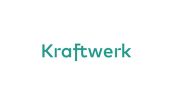
September 2015
How to build collaborative relationships with clients?
Can you think of a moment when you had to face your own prejudices and were proven wrong? Moments like when you left your expensive mobile phone in a poor neighborhood, you expected it to be stolen yet someone kept it for you in a safe place when you returned? I hope you have experienced such instances as they help you address your prejudices and learn to engage with difference. I recently had such an opportunity in a business context: I traveled to Colombia working with a company that is collecting debts from individuals. I was expecting a gloomy organizational climate with people yelling at their clients over the phone. Guess what? I was wrong. I found an inspiring organization that engages clients through collaboration.
I entered the training room filled with about 30 people. Laughter, animated discussions, some people sitting on tables, others on the floor and a few on chairs. My mandate is to work with them on collaboration. We are forming groups to reflect on how they work together and how they work with difficult clients.
Their first insight: Always look for the positive aspects in the person whom you are helping. Really? For a moment, I thought I was in a positive psychology seminar. Then they explained: We have a vision: Helping people find solutions. And to be truly helpful, we need to understand who our clients are, what their story is, what resources they have to solve their problems. For that, we need to listen actively and be curious. The CEO summarizes their approach towards the clients as empathy. And this empathy is at the heart of their business success: creating a collaborative relationship with the client rather than fighting against the client even if or rather especially if that client is difficult or needs to repay a debt.
So how do they create an inspiring and engaging environment? We are using the model I developed to assess their practice of collaboration. They fill in ecloo’s online survey: www.gofargotogether.com/survey and find three key activities (or what I call collaboration enablers) that help create a healthy organizational culture:
- They have time and space to build relationships internally and with their clients beyond performing tasks. And the group shows one example at lunch: A common meal sitting on the grass outside in the park mixing teams and hierarchies.
- Servant leadership: While the company has hierarchies, a leadership spirit of supporting employees to be successful can be felt everywhere. So you see the CEO staying in the background and listening most of the times. And clearly, people feel safe even voicing their criticism. They feel heard and set up for success. Leadership for once lived through listening rather than talking. How refreshing!
- People are inspired by a shared vision that goes beyond business results which by the way are remarkable: double digit growth and an expansion to neighboring Ecuador. Staff feel that their work is meaningful beyond the business. They feel that they make a humble contribution to reducing the socio-economic divide.
People like to come to work in spite of a challenging job. They have created meaningful bonds, sometimes friendships, they work in a supportive environment and they find meaning in what they do through a common vision. In brief, they work in a culture that values collaboration rather than competition.
Looking at their business success, one could fear that arrogance might be the logical next step. Far from it: The head of HR sees how through growth people start speaking about each other rather than with each other. So together we explore options of how that issue can be addressed: daily short stand up meetings to share information and knowledge, creating safe spaces for people to speak to each other or leverage conflict as a source of personal growth rather than a threat.
The group leaves me humbled with their attitude towards building an inspiring and innovative culture of collaboration amongst each other and above all with their clients:
Nunca una noche ha vencido el amanecer.
Y nunca un problema ha vencido la esperanza.
(the night has never been able to defeat the breaking morning
and never has a problem been able to defeat hope)
If you want to learn more about ecloo, visit Dominik’s website or complete ecloo’s free online assessment available in German, English and Spanish. Here is a link to the English version and here the one to the German version.
Subscribe to Our Newsletter
Never miss an update – sign up for our newsletter published every 3-4 weeks and stay connected with our community.


